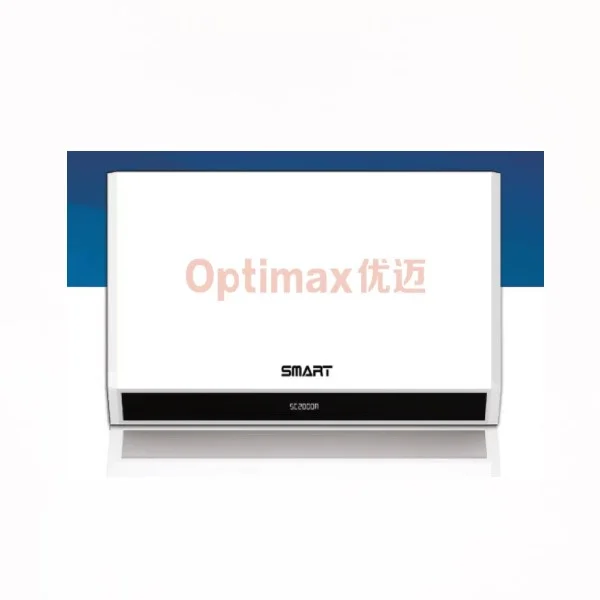In the modern era, elevators have become an essential part of building infrastructure. Whether in a residential, commercial, or industrial environment, elevators provide safe and efficient transportation across multiple floors, and their functionality largely depends on the elevator controller system. These systems manage, control, and monitor the movement of elevators, ensuring smooth and safe operations for passengers and equipment. An elevator controller system is the brain behind elevator operations. It oversees the elevator's journey, from receiving the user's call to stopping at the correct floor. This complex system coordinates various mechanical and electrical components, ensuring that elevators run smoothly, safely, and efficiently. In this article, Optimax will explore the features of elevator controller systems and understand how they contribute to the overall functioning of an elevator.

How the Elevator Controller System Works
The elevator controller system works by constantly interacting with sensors, inputs, and output devices to provide a seamless and efficient user experience. Here's a step-by-step breakdown of how it operates:
1.User Call
The process begins when a passenger calls the elevator by pressing a button either inside the elevator car or on the floor. In multi-floor buildings, the elevator controller system processes the request from the floor or the car and determines which elevator will respond to the call. If a request is made from the floor, the system will evaluate the nearest elevator and send it to that floor. In multi-elevator systems, it may also decide which elevator can make the best use of its time by evaluating the current position and load of each available elevator.
2.Movement Decision
Once the call is received, the controller system makes a decision on how the elevator should move. It controls the elevator's speed, direction, and acceleration to ensure that passengers are transported quickly and safely. The controller also ensures that the elevator stops smoothly at the requested floor. In advanced systems, the elevator controller system may prioritize calls based on factors like time of day or the number of people waiting. For example, during peak hours, the system might prioritize calls from lower floors to reduce congestion.
3.Safety Monitoring
Throughout the journey, the controller system constantly monitors the elevator's performance to ensure safety. This includes ensuring that the doors are fully closed before the elevator moves, maintaining safe speed limits, and checking for any potential malfunctions. The system also checks for overload conditions, automatically preventing the elevator from moving if the car is too heavy. In case of an emergency, such as a fire alarm or power failure, the elevator controller system is designed to react immediately by initiating predefined emergency protocols. These might include returning the elevator to the nearest floor and opening the doors, or sending the elevator to a safe floor.
4.Arrival and Door Operation
When the elevator reaches the requested floor, the controller system activates the door mechanism, ensuring that the doors open and close smoothly. The system also manages the timing of the doors, allowing enough time for passengers to enter and exit before closing them. In some systems, the controller can detect if the doors are obstructed or if a passenger has not fully entered or exited, and it will prevent the doors from closing until it’s safe to do so. This feature improves passenger safety and prevents accidents.
Key Features of Modern Elevator Controller Systems
1.Energy Efficiency
Energy efficiency has become a cornerstone of modern elevator controller systems, driven by both environmental considerations and operational cost savings. Building owners and managers are increasingly seeking ways to reduce energy consumption, and elevators, as high-use systems within buildings, have a significant impact on a building's overall energy profile. One of the primary ways modern elevator controllers achieve energy efficiency is through the use of regenerative drives. Regenerative drives capture the kinetic energy generated when an elevator descends and convert it into electrical energy. Instead of dissipating this energy as heat, the system feeds the energy back into the building's electrical grid, reducing the need for external power. This energy recovery system helps lower overall electricity costs, making elevators more sustainable and less resource-intensive.
In addition to regenerative drives, energy-saving modes such as standby or sleep modes are commonly integrated into modern controllers. These modes allow the elevator to consume minimal power when not in use. For instance, the system can automatically enter a low-power state during off-peak hours or when no calls are made for the elevator, ensuring that it isn't drawing unnecessary energy while idle. Furthermore, modern systems also adjust power consumption based on the building's energy demand, thereby optimizing the system’s overall efficiency. By incorporating these energy-efficient features, elevators contribute to the building's sustainability goals and minimize their environmental footprint.
2.Remote Monitoring and Maintenance
Remote monitoring and maintenance have become essential features in modern elevator controller systems, providing substantial benefits for building management teams, maintenance personnel, and end users alike. Traditionally, monitoring the condition of elevators required physical inspections and manual checks, which could be time-consuming and reactive. Today, thanks to advancements in cloud computing and digital technology, building managers and service teams can access comprehensive data and diagnostic information from anywhere in the world. Remote monitoring capabilities allow real-time tracking of elevator performance, including data on the elevator's speed, usage patterns, energy consumption, and error codes. By continually analyzing this data, building managers can identify emerging issues before they become major problems, enabling more proactive management of elevator systems. This helps in preventing unexpected breakdowns and improving the overall reliability of the elevator fleet.
In addition to performance monitoring, remote diagnostics make it possible for technicians to troubleshoot and resolve issues without needing to visit the site immediately. For instance, error logs can be accessed remotely, and in many cases, maintenance staff can diagnose and even resolve issues remotely, reducing the need for physical visits. This results in less downtime for elevators and minimizes the disruption to users. Furthermore, remote diagnostics can also help optimize the scheduling of regular maintenance, ensuring that the system is serviced at the most appropriate times based on actual usage data.
This remote capability not only enhances operational efficiency but also provides building owners with an added layer of cost savings, as unnecessary service calls can be avoided and downtime is minimized. It ultimately helps extend the lifespan of the elevator system by keeping it in optimal working condition and ensuring timely maintenance.
3.Smart Features and IoT Integration
The integration of smart features and Internet of Things (IoT) technologies has been a game-changer for elevator systems, transforming traditional lifts into sophisticated, connected devices that can interact with other building systems and improve overall building management. Modern elevator controllers are increasingly IoT-enabled, meaning they can connect to a building's central network and communicate with other systems such as lighting, HVAC, and security. This connectivity allows for real-time data exchange and integration, optimizing the building’s overall energy consumption and operational performance. For instance, the elevator system can adjust its operation based on real-time building occupancy data, reducing wait times or reprogramming elevator responses based on traffic patterns. For example, during peak hours, the system might prioritize specific floors, enhancing user convenience and minimizing wait times.
One of the most notable smart features in modern elevator controller systems is the ability to optimize energy consumption. IoT-enabled elevators can collect and analyze usage patterns over time, learning when certain floors are in higher demand, or when more frequent stops are required. Based on this data, the system can adjust its settings to minimize energy usage, such as by adjusting the speed of the elevator or optimizing its movements between floors. This type of energy management ensures that elevators are running in the most efficient manner possible, without overusing power during periods of low demand. Additionally, the IoT integration enables building managers to monitor the elevator's performance in real time, receiving data and insights on everything from energy usage to fault detection and maintenance needs. Real-time information can be used to improve building operations, streamline workflows, and even contribute to tenant satisfaction. For instance, elevator call buttons could be integrated with other smart building systems, allowing users to interact with the elevator through their smartphones or smartwatches, improving accessibility and user convenience.
Moreover, the integration of IoT and cloud-based systems provides building owners with valuable data analytics on the elevator system's overall health, usage patterns, and performance. With this data, they can make more informed decisions about maintenance schedules, upgrades, or replacing outdated components, ultimately ensuring that the elevator systems stay in top shape and continue to meet user needs efficiently.
The elevator controller system is a vital component that ensures the smooth, safe, and efficient operation of modern elevators. From simple single-elevator systems to complex multi-elevator and destination dispatch systems, the elevator controller plays a critical role in determining how quickly and efficiently passengers are transported between floors. By integrating advanced features such as energy efficiency, smart control, and remote monitoring, modern elevator controller systems help reduce costs, improve service, and ensure safety. As the demand for high-performance vertical transportation systems continues to grow, the elevator controller system will remain the backbone of modern building infrastructure.
https://www.xizi-ec.com/Elevator-Control-System
www.xizi-ec.com
Hangzhou Optimax Tech Co., Ltd.
